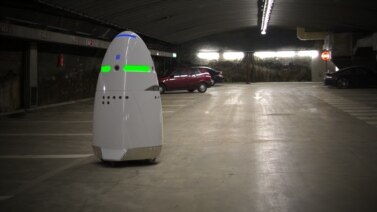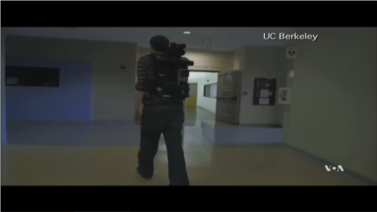Police and prosecutors sometimes recreate crime scenes in an effort to better understand complex cases. They may set up a room to make it look like the room where a murder took place. To do this, they use photographs from the murder scene to set up tables, chairs and other objects just where they were at the time of the murder.
Now, scientists in Switzerland are developing virtual reality technologies to recreate crimes scenes. The scientists say these computer-made images can be used for quality recreations of events.
They say this kind of technology can help police, investigators, judges and lawyers better visualize crime scenes. They say it can even perform virtual autopsies – recreating examinations of human remains.
The scientists work at the Institute of Forensic Medicine in Zurich. They developed special computer software to create this virtual reality technology. The software program is called Forensic Holodeck. It recreates crime scenes using hand-held three-dimensional, 3-D, scanners. The scanners show the user an object’s length, width and height. The scientists also use the Oculus Rift headset, equipment often used for video games.
Investigators use the three-dimensional images to reconstruct the crime. The images are based on reports from witnesses and camera recordings.
Steffen Ross is a radiologist at the Institute of Forensic Medicine. Mr. Ross explains how the technology works.
“We scan the crime scene and we are also able to scan the dead body, if there is a dead body involved, and then we can put all the data together in the computer and create a virtual crime scene, which is a 3D model of the crime scene.”
The software also rebuilds trajectories of bullets. Red and yellow lines are used to show their movement through the air. Mr. Ross says the technology gives the scientists a better idea of the trajectories than a traditional, two-dimensional image.
In addition to the virtual reality technology, the institute also developed a robot named Virtobot. Medical examiners can use Virtobot to perform virtual autopsies in great detail.
Robert Breitbeck is a scientist with the Institute of Forensic Medicine. He says the system provides a 3-D model of the human body.
He says scientists can make images of the injured skin in color and true to the exact size. This information can be stored, and later combined with three-dimensional data, which police can provide. From this information, he says, the scientists can do 3D reconstructions, or recreate images, from murder cases or traffic accidents.
Several countries are already using both systems – the virtual reality technology and Virtobot.
I’m Jonathan Evans.
VOA’s George Putic reported on this story from Washington. Triwik Kurniasari adapted it for Learning English. George Grow was the editor.
Words in This Story
prosecutors – n. lawyers for the government
virtual – adj. existing online; not something you can touch
visualize – v. to make visible; to imagine
autopsies – n. an examination of a body to find the cause of death
reconstruct – v. recreate
accounts – n. reports
radiologist – n. scientist dealing with X-rays or other radiation
trajectories – n. curved paths along which something (such as bullet) moves through the air.

